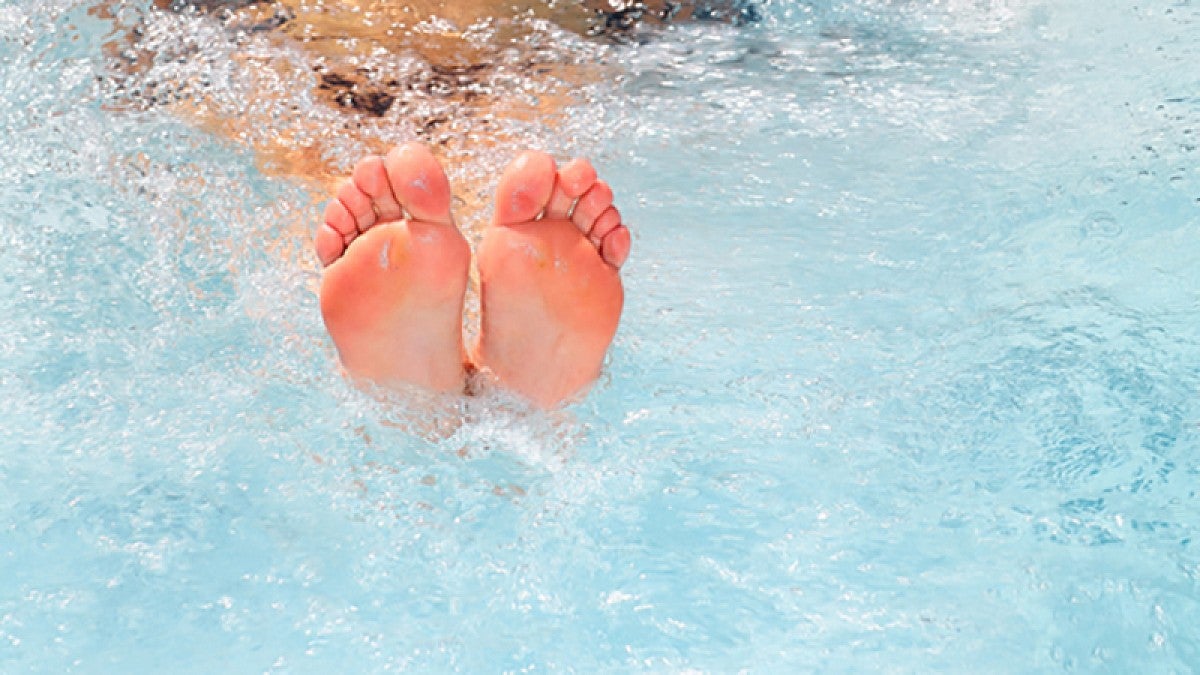University of Oregon researchers are exploring heat therapy as a route to better health, and volunteers are needed to either relax in a hot tub while watching TV or riding a stationary bicycle three times a week for 10 weeks.
It’s a clinical trial that aims to determine if heat therapy alone can bring down elevated blood pressure as much as or more than exercise. Doctors routinely recommend exercise.
“We know that exercise is beneficial to human health,” said study co-leader Christopher Minson, who holds the Kenneth and Kenda Singer Endowed Professorship in Human Physiology. “It really is a polypill. We know that rates of cardiovascular, metabolic and memory diseases, and cancers all decrease with exercise. The problem with exercise is that not enough people are doing it.”
To be eligible, volunteers must be 35-60 years old, diagnosed with elevated blood pressure or stage 1 hypertension, not regularly exercising and not taking medications for the condition. Minson’s team is seeking 50 people, who will be randomly assigned to one of the study groups.
National statistics, Minson said, suggest plenty of people should be available for the $2.5 million study, which is being funded by the National Institutes of Health’s National Heart, Lung and Blood Institute.
Since the American Heart Association changed the threshold for high blood pressure in 2017, some 46 percent of U.S. residents now are hypertensive. Under the new guidelines, the previously defined normal systolic-to-diastolic ratio of 120/80 is now considered high. Anything above 130/90 puts a person into stage 1 hypertension, a clinical disease level.
And, according to the National Centers for Disease Control and Prevention, only 23 percent of U.S. residents aged 18 and over meet recommended guidelines for both aerobic and muscle-strengthening activity.
“Studies have shown that exercise reduces blood pressure, but not in a dramatic way – at most about 5-6 millimeters of mercury pressure.” Minson said. “That’s for formal exercise programs. In reality, most people get less exercise.”
Minson and John Halliwill, professor and head of the Department of Human Physiology, pursued federal funding for the clinical trial following a series of studies in Minson’s Cardiovascular Control Lab found preliminary evidence for the benefits of heat therapy.
In the Journal of Physiology in 2016, Minson’s group found that eight weeks of hot-water therapy for 10 sedentary young adults led to several vascular-related improvements, including reduced arterial stiffness, reduced mean arterial and diastolic blood pressure, whereas no such improvements were seen in a control group of sedentary participants who sat for the same amount of time in water that did not change their body temperature.
Two other studies published last year in the American Journal of Physiology: Endocrinology and Metabolism and the American Journal of Physiology: Regulatory, Integrative and Comparative Physiology, explored heat therapy in obese women suffering with polycystic ovary syndrome.
In the first, improved glucose tolerance and key metabolic signaling were seen in nine women getting heat therapy, compared to nine women in a control group. In the second, nine women in a heat-therapy group realized a reduction in key sympathetic nervous system activity related to blood pressure and improved profiles in heart-disease risks.
As those three studies were being completed, Minson noted, published results of a study done in Finland found that regular sauna exposure in men tracked for 25 years resulted in reduced mortality for all health-related risks, lower rates of hypertension and improved memory.
Participants in the clinical study, which will be done over three years, will need to visit the UO some 40 times over three months to allow for pre-, mid- and post-testing. Participants will be eligible for up to $600 in remuneration for their time.
For more information, call 541-600-4095 or send an email to the Department of Human Physiology’s exercise lab.
—By Jim Barlow, University Communications


